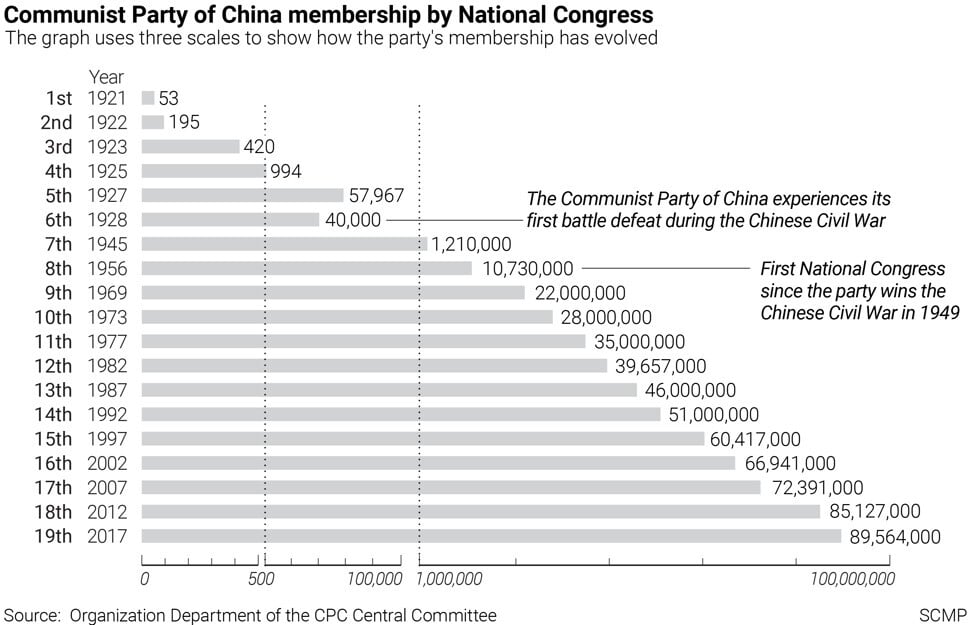
Explainer | Joining China’s Communist Party: how and why so many people do it, ‘secret’ members and expulsion
- Since its founding 100 years ago, China’s ruling party now has almost 92 million members
- Almost 5 million local-level party organisations pervade every aspect of Chinese society, from villages and schools to private companies
This is the fifth in the South China Morning Post’s series of explainers about China’s Communist Party, in the lead up to the party’s 100th anniversary in July. In this piece, Jane Cai and Qin Chen shed some light on why so many people in China join the Communist Party, and what this entails.
The party they founded has since grown to become the second-largest in the world – after the Bharatiya Janata Party, one of India’s two major political parties – with almost 92 million members.
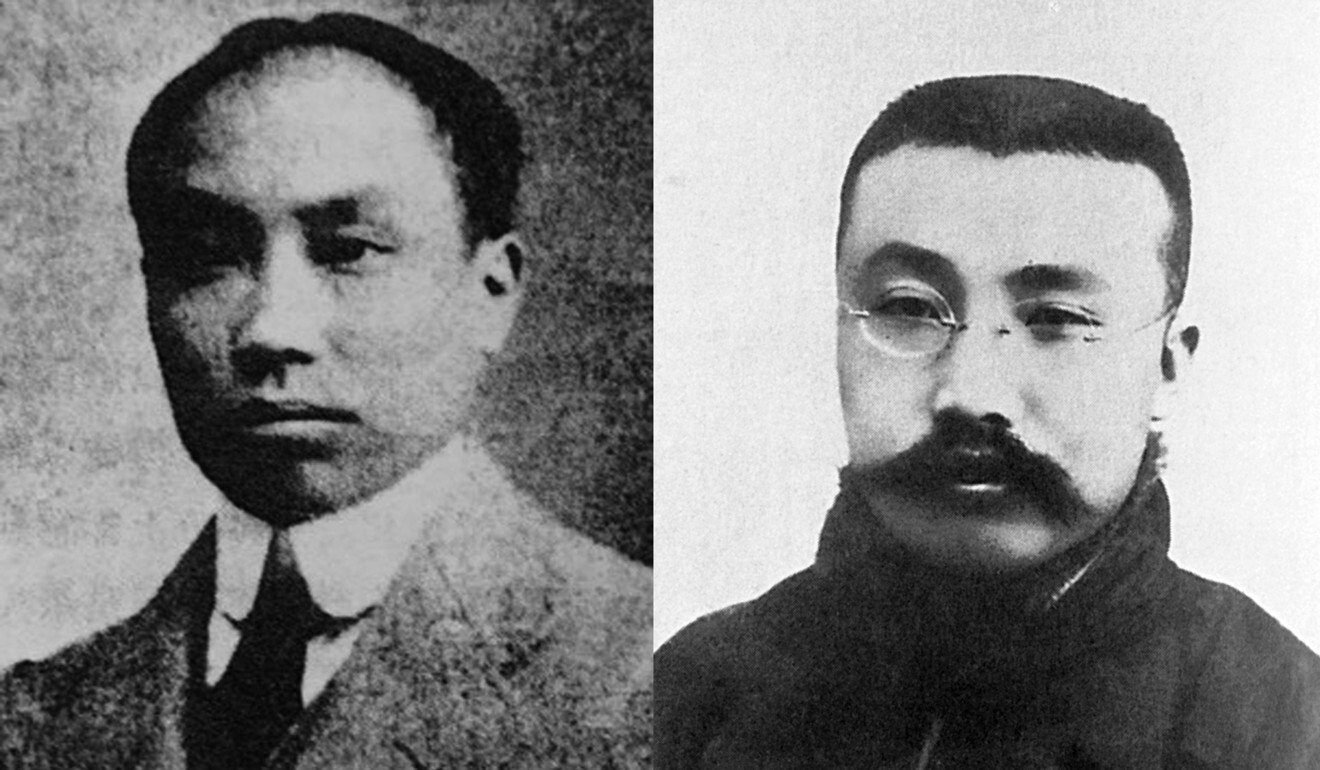
After the party won the civil war and established the People’s Republic of China in 1949, membership grew to 22 million in the next two decades and continued to rise.
In this century, membership rose at an average of 2.4 per cent annually under Hu Jintao, who served as the party’s general secretary from 2002 to 2012 before growth slowed markedly to about 1 per cent a year in the past decade, according to official data.
In 2013, the party’s organisation department set an annual growth target for membership of “about 1.5 per cent” over the next 10 years, as President Xi Jinping – who also serves as party general secretary – ordered it to “control numbers” and “improve the quality” of members.
Today, one in every 15 people in China is a Communist Party member. There are almost 5 million local-level party organisations, also known as party cells, pervading every aspect of Chinese society, from villages, schools and neighbourhoods to private companies and institutes.
Who are the people joining the Communist Party?
While the party used to represent mainly the three revolutionary classes – workers, farmers and soldiers – it has attracted more intellectuals, professionals and entrepreneurs since the beginning of this century.
From 2007 to 2019, the share of blue-collar and rural workers in the party fell from 41.5 per cent to 34.8 per cent, while the proportion of managers and professionals increased from 22.4 per cent to 26.7 per cent, according to the organisation department.
An education ministry survey conducted at 140 universities in 15 provinces in 2011 found that 80 per cent of 250,000 students polled wanted to join the party.
Part of this was ideological alignment with the party’s values: the poll found more than 90 per cent of students agreed with the concept of a socialist core-value system that consisted of Marxism, socialism with Chinese characteristics, patriotism and the spirit of reform and innovation.
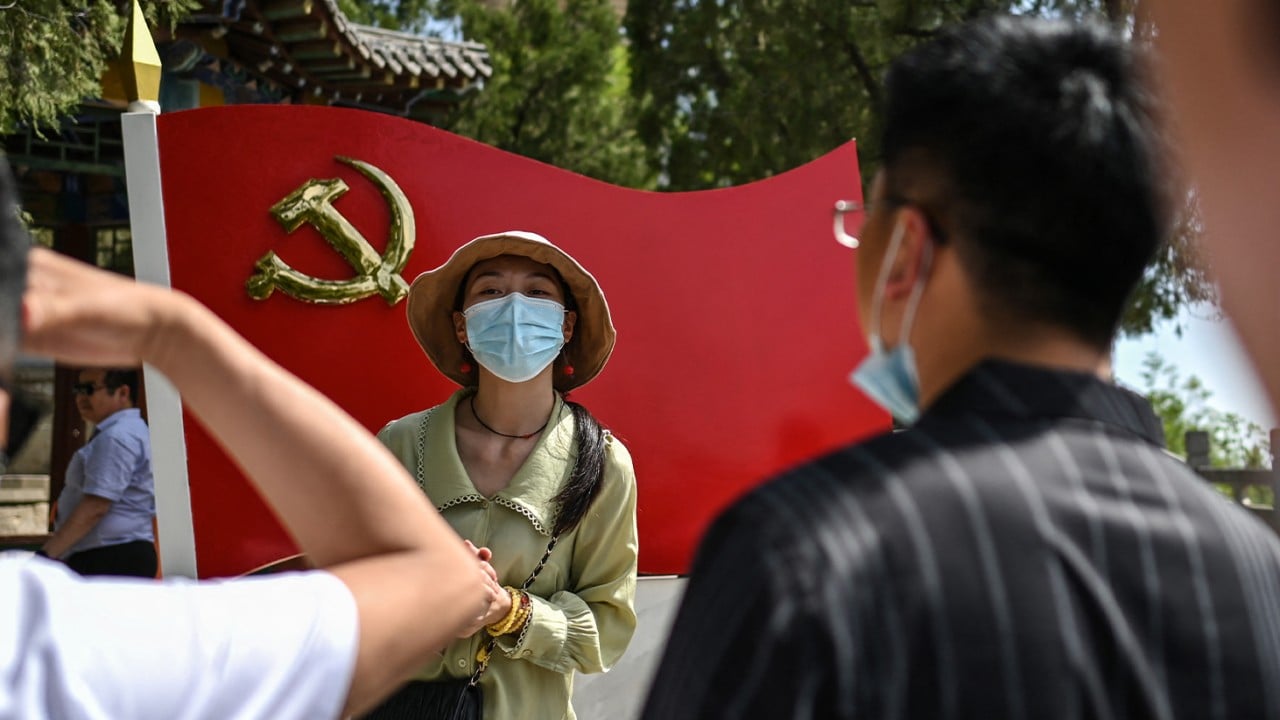
02:15
Visitors mark Chinese Communist Party centenary with pilgrimage to ‘Red Holy Land’
But Communist Party membership can also be a career boost. While official data shows only 8.4 per cent of members worked for party and government organs as of 2019, anyone who holds a position of authority is almost certainly a party member. That includes not just party and government bureaucracies, but also the military, state-owned enterprises, universities and schools and hospitals.
Some government jobs explicitly require a party membership. Support staff for the party, for example, have to be members as a rule.
China’s Xi vows support for private firms amid concerns of government intervention
In the absence of market-supporting institutions, entrepreneurs have found that connections to the Communist Party help their firms secure favourable regulatory or tax conditions and obtain access to resources such as bank loans, according to a paper written by Chinese University of Hong Kong scholars led by Hongbin Li.
Party members include well-known business leaders such as Lenovo founder Liu Chuanzhi, China Evergrande’s Xu Jiayin and Jack Ma Yun, founder of e-commerce giant and the South China Morning Post’s parent company Alibaba Group Holding.
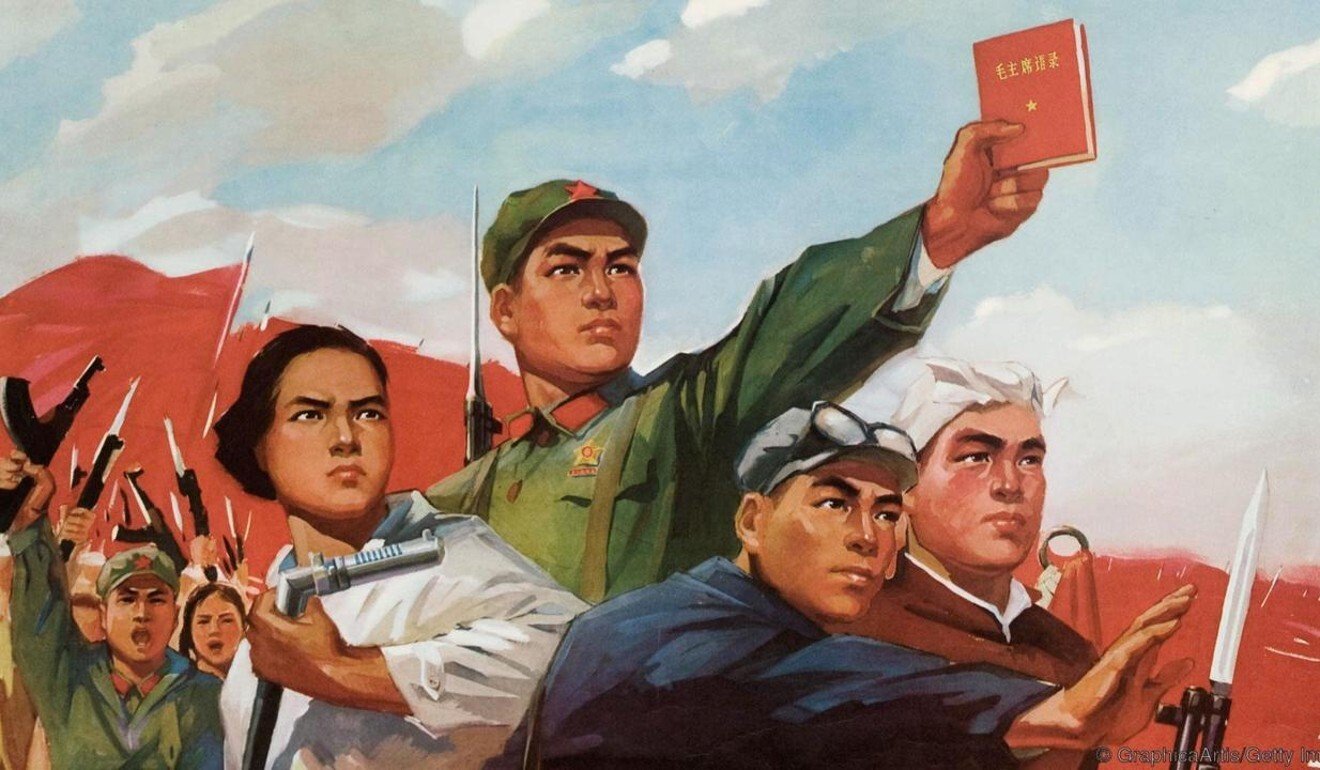
What is the process for joining the party?
Potential members must apply to their local party organisations, initiating a multi-year process with more than 20 steps to determine their qualification, including submitting a formal application, meeting with the local party organisers and attending party study sessions.
Candidates also need a party member to act as a guide and mentor, who they often find through party organisations at their work and schools.
Universities must train inquisitive minds who are loyal to the party, Xi says
After about a year of study, applicants need to pass written tests. They must also pass background checks – those with criminal records or whose family members have such records may fail these.
If they pass all of these steps, applicants still have to go through a probation period of at least a year before the party branch decides whether to admit them.
What about “secret” party members?
Not everyone goes through the standard process to gain party membership. The party constitution allows the Central Committee or provincial party committees to admit new members directly “under special circumstances”.
Members who join under this process are usually those with high social status, including influential elites, social organisation leaders and capitalists who have connections with the upper class.
Why China’s Communist Party is inseparable from the state
Usually they only keep contact with high-level cadres and their identities are concealed even within the party to facilitate their activities in “special regions and special sectors”, including helping the party win support or wield influence in areas where it has little control, according to CPCnews.cn, a party knowledge website which is part of the official newspaper People’s Daily.
The most notable example was Rong Yiren, China’s vice-president from 1993 to 1998, whose membership was only revealed after his death in 2005.
Rong was among the first entrepreneurs to hand over their flour and cotton milling businesses to the state in the private company nationalisation campaign in the 1950s.

In the late 1970s, Rong was made an adviser to China’s paramount leader Deng Xiaoping on the sweeping economic opening-up and reform. In 1978, he set up China International Trust and Investment Corp which became a sprawling state-owned conglomerate and a vehicle for massive foreign investment.
When Rong became China’s vice-president in 1993, overseas observers widely took the appointment of the “non-party member” as a positive signal of the party’s determination to open up and attract talent.
According to Rong’s official obituary, he joined the party in 1985, more than a decade before the party welcomed members from the business community.
Another secret member was Luo Haocai, former vice-chairman of the Chinese People’s Political Consultative Conference. Luo was also chairman of the Zhi Gong (Public Interest) Party, which was founded in San Francisco in 1925 and consists of scholars with overseas ties. It is one of eight officially recognised political parties in China, in addition to the Communist Party.
Luo’s membership was only formally recognised in the obituary released by Xinhua after he died in Beijing in 2018, aged 83.
Can members disagree with party leaders?
Members are expected to adhere to party leadership. Should there be any differences among members, the minority are expected to obey the majority, while junior members must follow senior ones.
The revised guidelines say, for example, that cadres can report misconduct by their superiors but are prohibited from airing them in public.
2 million posts deleted for ‘historical nihilism’ as party centenary nears
Members who openly criticised the party have been expelled in the past.
In another article circulating online since March 2020, Ren criticised the government’s mishandling of the coronavirus outbreak, just as Beijing was promoting its success in containing the pandemic under the party’s leadership.
Ren was expelled last July for “serious violations of law and discipline”. Two months later, he was sentenced to 18 years in prison on corruption charges and fined 4.2 million yuan (US$620,000).
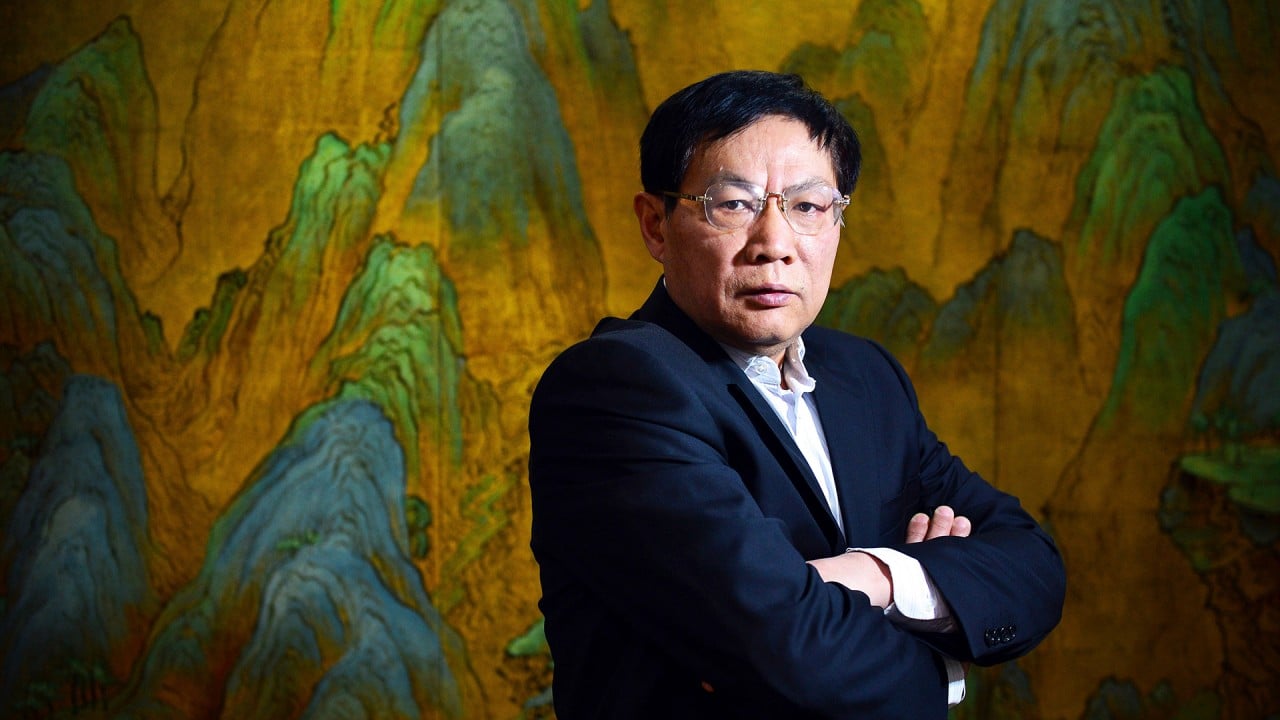
02:07
China sentences Communist Party critic Ren Zhiqiang to 18 years for corruption
Can members choose to leave the party?
According to its constitution, members are free to leave the party. The relevant party branches discuss withdrawal applications at their general membership meetings before removing the members’ names from their lists and reporting the withdrawals to the higher party organisations to update central records.
It is unknown how many members have left the party. Wang Qinfeng, deputy head of the organisation department, said in 2011 that 32,000 people were expelled or withdrew from the Communist Party of China in 2010, without giving a breakdown of this number.
Most of the former members were forced out to “ensure the advanced nature and purity” of the party, he said.













